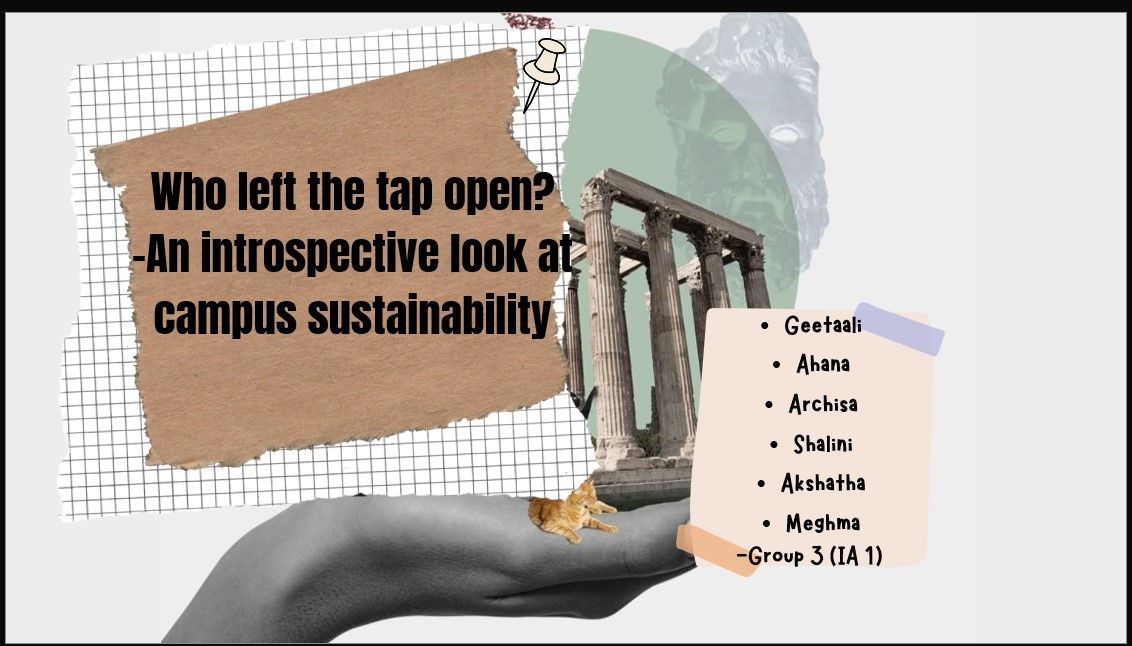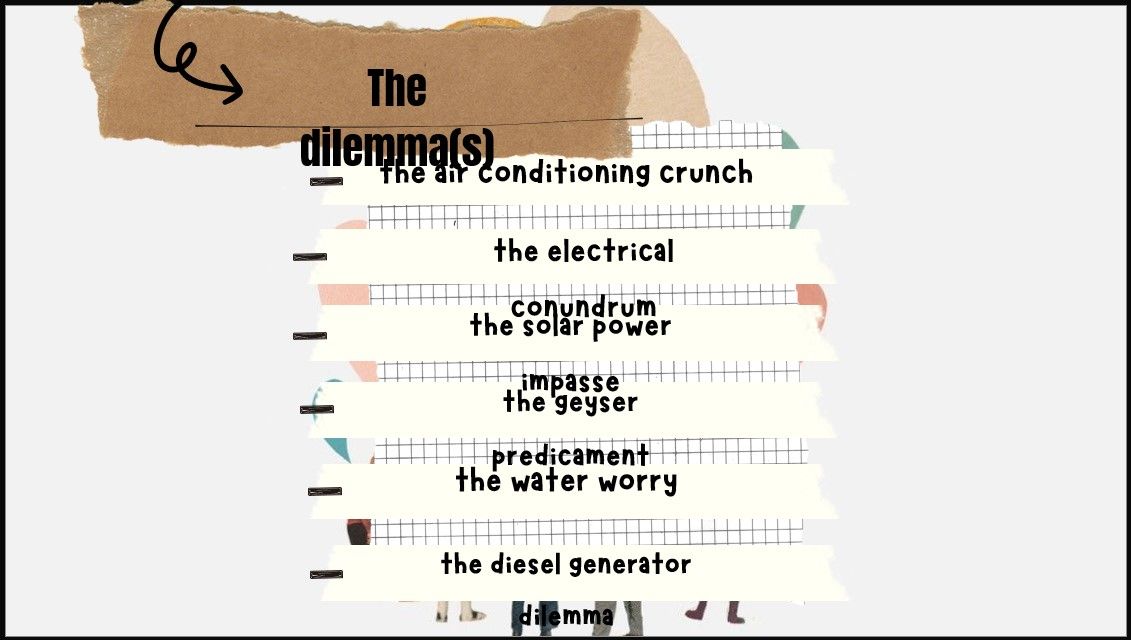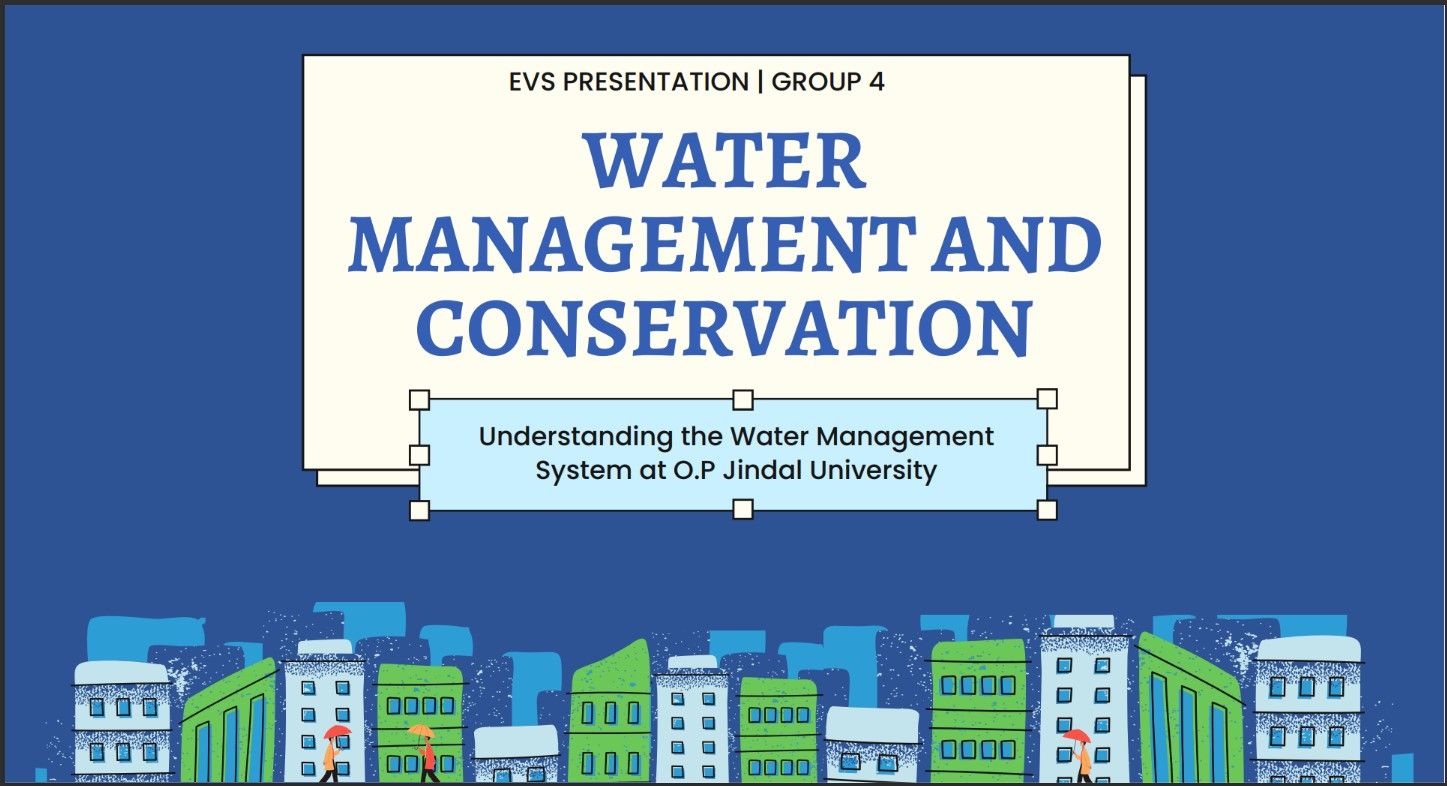Enhancing Student Engagement in College Environmental Education Using Group Projects—An Indian Experience

Guest blog post is written by Assistant Professor of Practice Pratik Phadkule from Jindal School of Government and Public Policy, OP Jindal Global University in Sonipat, India. This post is being shared on eePRO with the writer's permission.
Teaching has not been easy in the era of artificial intelligence, where every type of knowledge is available at the click of a mouse. When the students' attention span has reduced, one needs to go the extra mile to get the students interested in the subject.
The situation becomes even more challenging when your course is environmental studies.
Environmental studies is a mandatory course at the undergraduate level in India. However, the objective should not be to pass the course to get an undergraduate degree. The aim should be to be aware of environmental degradation, climate change, and potential actionable changes in our day-to-day lives. An environmental studies course can possibly change how we see things—changing our values, beliefs, point of view and how we look at the nature and environment around us.
Sparking Student Interest in Environmental Studies
As teachers, it's important to recognize that students are more likely to take the subject seriously if it’s new or relevant to them. After all, they are students expecting to learn something new from you and your course. One way I’ve found to fulfil this expectation is to read all the latest research papers on climate change and environmental issues and bring those findings to the class.
Suppose the research papers are relatively complex, and students may not find them interesting. You can make the findings and present them during the class. However, at the undergraduate level, students might not even be interested in advanced knowledge!
Then, the question remains unanswered: How can we get students interested in learning and engaging with environmental studies?
I tried to search for the answer to the question, and I partially got the answer. This time, at the suggestion of one of my senior colleagues, I implemented a 'group project' as part of the assessment.

Presentation slide on campus sustainability by student group three. Slide credit: Meghma, Shalini Praveen, Geetali, Ahana, Akshatha

Presentation slide from student group three. Slide credit: Meghma, Shalini Praveen, Geetali, Ahana, Akshatha, Archisa Dalal
Hands-On Learning Through Group Projects
In this group project, my students and I decided that students would form groups of five members and decide on a topic for the group project. My students and I decided that data collection could occur inside and outside the campus. The class also agreed that no two student groups could work on the same topic. The topic can be related to water management, waste management, energy consumption, landfill sites, waste segregation, environmental impact assessment, and other related issues. Once groups were formed and topics selected in the first week, students would work on outlining the assignment.
In the outline, students worked together to define the issue, locate the problem, identify the stakeholders involved, plan to collect data and information (deciding whom to interview and what to observe) or decide who will review each topic if the field component is not involved.
Lastly, students organise the data and information to make a presentation.

Presentation slide by student group four on water management. Slide credit: Shruthi Jagadeesan, Simir Reddy, Aaryan, Naveen Gopinath

Flow diagram of water use on campus. Slide credit: Shruthi Jagadeesan, Simir Reddy, Aaryan, Naveen Gopinath
“...The Teacher's Job Is to Ignite That Knowledge.”
Of course, I faced the usual expected obstacles, such as all students not being interested. However, the students who took the assignment seriously and started working early in the semester brought some unique group projects.
One of the groups presented on the university water management system in which they analysed the university's water management cycle, making suggestions for judicious use of water.
Another group worked on campus sustainability, analysing water, electricity, and waste management practices and reviewing best practices from other universities worldwide.
A different group took Lifestyle for Environment (LiFE) as the topic and analysed it for practical implications.
One of my teachers, the noted Indian Economist late Prof. M. Kunjaman, told me once, "Pratik, all knowledge is within the students; the teacher's job is to ignite that knowledge." I remember his words. It is almost impossible for a teacher to bring something entirely new for the class that students cannot already access and read online. Therefore, a teacher's role becomes the igniter of knowledge rather than a provider.
The classroom exercise helped to nudge and engage students in a constructive exercise. It helped them take the initiative to think about the problem and research around it. In the group project, students were engaged in a practical project that encouraged them to think about the application of concepts like sustainability and water conservation. Students are understandably concerned about their grades. Still, when these grades are based on some practical project and the students are encouraged to think about these issues, I found this will help bring awareness, possibly behaviour change, and if not, a change in the students' beliefs and principles.


